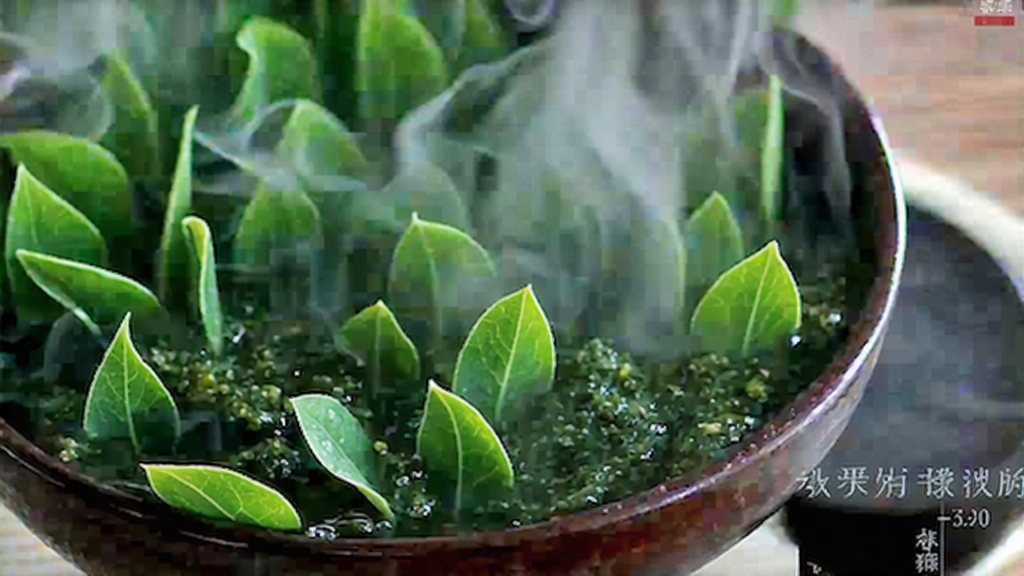
Tie Guan Yin, literally “Iron Goddess of Mercy,” is the most celebrated sub-style of Chinese oolong. Born in the granite valleys of Anxi, southern Fujian, this tea has moved from secluded monastery gardens to the cups of emperors, merchants, and, today, global aficionados. Its story begins in the early eighteenth century, when a devout farmer named Wei Yin is said to have dreamt of Guanyin, the Bodhisattva of Compassion. Guided by the deity, he found a stunted tea shrub in a crevice behind an iron statue in an abandoned temple. He replanted the bush in his field, tended it with reverence, and the leaves he harvested produced a liquor so fragrant that villagers believed divine hands had crafted it. The name “Iron” nods to both the iron temple icon and the tea’s heavy, tightly rolled pellets; “Goddess of Mercy” honors the spiritual vision that elevated a humble plant into cultural legend.
Anxi County, cradled by the Daiyun and Wuyi ranges, enjoys a maritime subtropical climate: mild winters, fog-drenched springs, and iron-rich lateritic soil. At elevations between 500 and 1,200 metres, temperature swings of 8–10 °C between day and night slow leaf growth, concentrating amino acids and floral volatiles. Indigenous Hongxin Waiwei Tao cultivars—whose leaves are oval, thick, and serrated—thrive here, but Tie Guan Yin’s singular personality is coaxed less by genetics than by painstaking craft. Over three centuries farmers have refined a five-act choreography: picking, sun-withering, shaking, fixation, and rolling-plus-baking. Each step is timed to the hour, sensitive to barometric pressure and leaf moisture.
Picking occurs only when the morning dew lifts, typically from late April to early May for spring tea, and again in late September for autumn. Two leaves and a bud are plucked, but the stem is snapped 2 mm below the second leaf so that the wound will oxidize evenly. Sun-withering lasts 20–40 minutes; the leaf loses 8–10 % moisture, edges soften, and grassy notes retreat. Then comes yaoqing—“rocking the green.” Leaves are spread in round bamboo trays and rhythmically tossed every 15 minutes for 6–8 hours. Gentle bruising ruptures cell walls, allowing catechins to meet polyphenol oxidase; the edges blush scarlet while the centre stays jade, creating Tie Guan Yin’s signature “green leaf with red border.” When the aroma shifts from cut grass to gardenia and overripe peach, the tea master fires the wok at 280 °C for two minutes to halt oxidation at 30–40 %—the narrow band that places Tie Guan Yin between green and fully oxidized rock oolong.
While still warm, the leaves are wrapped in square cloth bundles and rolled under mechanical pressure into tight hemispheres. This repeated bundling-and-breaking, up to thirty cycles, fractures inner cell walls without stripping the surface, allowing slow release of oils during later infusions. Finally, the tea is baked over charcoal made from longan fruit wood. Traditional “slow fire” baking lasts 7–10 hours at 60–70 °C, deepening the liquor to golden-green and imprinting a whisper of toasted grain. Modern “light fire” or “qing xiang” (fresh aroma) versions are baked for only 40 minutes at 90 °C, preserving bright lily and lactonic top notes. The result is three stylistic streams: Qing Xiang (jade, floral), Nong Xiang (honeyed, orchid), and Chuan Tong (charcoal, mineral). Each can be cellared; charcoal versions mellow into jujube and sandalwood after five years, while qing xiang peaks within eighteen months.
To unlock Tie Guan Yin’s layered soul, gongfu cha is the preferred ritual. A 120 ml porcelain gaiwan or a petite Yixing zhuni teapot allows leaf expansion while retaining heat. Use 6 g of tea—about one heaping tablespoon—for every 100 ml. Rinse the leaf for three seconds with water just off the boil (95 °C) to awaken the pellets; discard this liquor. First infusion: 15 seconds, focusing on aroma. Lift the gaiwan lid and inhale; the steam should carry hyacinth, fresh cream, and a trace of